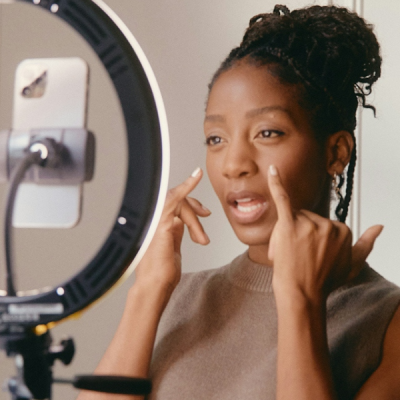Why viral days might soon be over and why that could be great for brands
![]() – By: Livia Gammardella, Marketing and Digital Director at Latam Intersect PR.
– By: Livia Gammardella, Marketing and Digital Director at Latam Intersect PR.
Did you know that LinkedIn changed its content algorithm last year to prevent posts from going viral? As many argued, this is likely a positive outcome for brands and content creators, but it also reflects a developing trend on the internet in general. This suggests that the days of “virality” may be coming to an end soon – perhaps they have already ended – and that’s great news for brands seeking to create genuine online connections with their followers, peers, and communities.
The internet has always been a dynamic, multifaceted, and unpredictable phenomenon, but it’s undergoing rapid change that has even left experts uncertain about where it will lead us. Many dramatic terms have been used to describe what’s happening with the internet, especially regarding social media: “decay,” “end,” and more creatively, the decay of our old favorite spaces.
However, the most accurate and useful word for brands to consider is “fragmentation.” This term provides some useful explanations for the decline of “virality.” And that’s not necessarily a bad thing; it also provides some excellent indications of what brands should focus on.
We’re seeing an increase in the strengthening of micro-communities in digital spaces, and perhaps the decline in virality is a reflection of this – what used to be interesting for everyone may no longer be relevant to these subgroups, each with different tastes, opinions, and attitudes.
When we talk about communities, we enter the realm of culture – if culture is what makes us human on a scale, and if who we are is defined by our environment, with the integration of virtual reality into our human reality, that line becomes blurred. And “culture” then becomes defined by our online environment, shaping us into niche communities, according to where we wish to belong. What was once a result of chance is now a result of our own initiatives. From this new online culture, the world is interpreted.
This shapes our priorities, how we connect, consume, and interact. And it happens differently for people in the same location. Demographics lose importance to psychographics, as the world as we know it is evolving into a place where finding people who think like us is much easier than before the online reality.
Furthermore, it’s easy to discuss the decline of our collective online experience, but, as the Mayan astronomers taught us in 2012, often what we consider an “end” is actually the beginning of an entirely new cycle. So, what does the fragmentation of social media mean for your brand? It means the end of the idea that social networks offer a “digital square,” or large online public spaces where people gather to collaborate and exchange ideas.
Instead, these spaces have fragmented and divided people into smaller groups with similar ideas. This means that something or someone being popular on one person’s TikTok doesn’t necessarily mean it will even be recognized by another user on the same platform. The very concept of “going viral” takes on much different connotations than what we saw in the past, as the social networks themselves are realizing this movement and refining their algorithms to personalize tastes, as is the case with the two platforms mentioned earlier. In summary, each day it becomes more unlikely that something will have as much impact on our collective psyche as, for example, a video of a cat playing the keyboard in 2009.
Moreover, more and more brand attempts to “break the Internet” or follow trends have received a mix of criticism and disapproval. A brand that desperately tries to ride every new trend that emerges will likely struggle to create real connections with its followers. And that’s exactly what they should aim for with this fragmentation. Understanding your niche and to whom it makes sense will ensure much better results than simply following the latest fad, which may have no relevance to the audience you want to communicate with.
So, we establish that social networks are fragmenting into more isolated locations, that micro-communities should be the new focus of study for brands wishing to position themselves online, that going viral is no longer what it used to be, and that brands seem to be the last entities still concerned with baseless “virality.” What to do now?
The fragmentation of social networks is actually good news for brands that stop focusing on “going viral” and instead listen to what a high-quality platform like LinkedIn is saying. Because, while online communities may be smaller, they may actually be becoming more engaged, seeking meaning, depth, and connection in all their interactions – online or offline, with people or businesses.
Think about how many viral moments you’ve forgotten and then think about which social media posts actually stayed in your mind. What do these latter ones have in common? They’re probably helpful, authentic, and come from a person you admire or feel a connection with.
Now, let’s recall what LinkedIn suggested brands and individuals should share: posts “to help members develop their skills in their area of expertise.” They’re not overly personal, but they’re authentic, identifiable, and valuable to your audience. This, in turn, can be applied to all social media platforms. Forget the sarcasm, forget the memes with no defined strategy, focus on your voice, on what you have to offer, and sooner or later, you’ll be a useful part of a community of like-minded people. Wasn’t that what the internet was supposed to be in the first place?


 – By: Livia Gammardella, Marketing and Digital Director at Latam Intersect PR.
– By: Livia Gammardella, Marketing and Digital Director at Latam Intersect PR.











